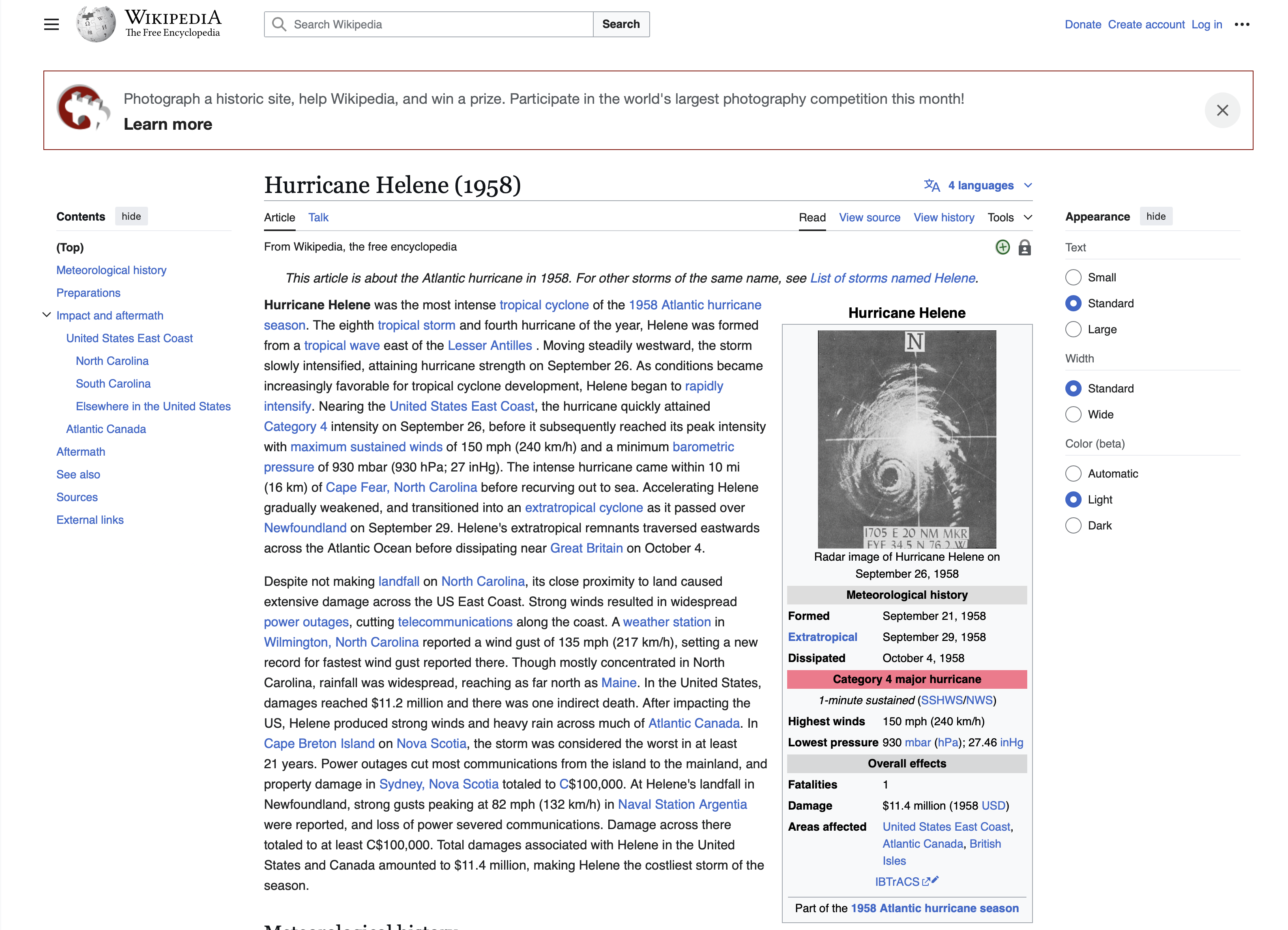This is going to make your blood boil….
FEMA says “Sorry Americans, but we don’t have enough money left to get through Hurricane Season.”
Basically: good luck on your own!
Take a look:
🚨 WTF??! The Biden Harris regime is now saying FEMA does NOT have enough funds to make it through Hurricane season.
RIGHT AFTER giving BILLIONS more to Ukraine.
ENOUGH WITH THE AMERICA LAST BS. pic.twitter.com/LtwaokQzpg
— Nick Sortor (@nicksortor) October 2, 2024
More here:
🚨BREAKING: U.S. Homeland Security Secretary Mayorkas: FEMA does not have the funds to make it through hurricane season. https://t.co/iuCTKtLkad pic.twitter.com/fCJzgvRNBa
— Joni Job (@jj_talking) October 2, 2024
Local NBC10 reported that even prior to Hurricane Helene, FEMA was under-funded and expected to run out of money in August:
The head of the Homeland Security Department said Friday that the agency tasked with responding to disasters across the country is prepared as it goes into what is expected to be an intense hurricane and wildfire season but he’s concerned about looming budget shortfalls.
As parts of the U.S. are sweltering under potentially record-breaking temperatures, Secretary Alejandro Mayorkas said extreme heat could qualify as a major disaster under a law governing how the federal government responds to natural disasters but that local communities historically have been able to deal with major heat waves or wildfire smoke without needing federal assistance.
Mayorkas spoke to The Associated Press during a visit to the headquarters of the Federal Emergency Management Agency for a briefing about the hurricane season, which started on June 1. Experts think this year could be one of the busiest Atlantic hurricane seasons on record as climate change causes storms to become more intense. Already Tropical Storm Alberto, the season’s first named storm, brought heavy rain to parts of Mexico.
Mayorkas said one reason FEMA is prepared is that the agency staff has gotten so much practice responding to disasters as climate change has intensified.
“They have exercised these muscles regrettably year after year. As the impacts of climate change have been more and more evident, we have seen and experienced increasing frequency and gravity of extreme weather events,” Mayorkas said.
Against that backdrop, the secretary said he was concerned about the size of the agency’s disaster relief fund. That’s the primary way that FEMA funds its response to hurricanes, wildfires, floods and other disasters.
“We expect the disaster relief fund, which is the critical fund that we use to resource impacted communities, we expect it will run out by mid-August. And we need Congress to fund the disaster relief fund,” he said.
In late September we just gave roughly 1/4 of the entire FEMA budget to Ukraine — $5.5 billion!
From the State Department’s own website:
Today, as part of the surge of assistance that President Biden directed ahead of his meeting with President Zelenskyy, the Department notified Congress of the intent to direct the drawdown of up to approximately $5.55 billion in defense articles and services from DoD stocks for military assistance to Ukraine under Presidential Drawdown Authority.
This drawdown utilizes the remaining authority of the Presidential Drawdown Authority under section 506(a)(1) of the Foreign Assistance for fiscal year 2024 provided by the Ukraine Security Supplemental Appropriations Act, 2024, which will expire on September 30, 2024. We are taking this step to ensure this Authority does not expire and the United States can fully utilize the funding appropriated by Congress.
By doing so, the United States will be able to continue to provide a surge in defense articles and services to Ukraine from DoD stocks under planned drawdowns in the weeks and months ahead. These drawdowns have been made possible by strong bipartisan support from Congress.
The United States is committed to supporting the Ukrainian military with the equipment they need to strengthen their position on the battlefield, defend their territory and people from the Kremlin’s brutal aggression, and prevail in this war to secure a just, lasting, and comprehensive peace. As President Biden has made clear, the United States and the international coalition we have assembled will continue to stand with Ukraine.
How much have we sent Ukraine in total?
Roughly 6x the FEMA budget — over $113 billion!
From StateFacts.com:
The United States has allocated $113.4 billion in emergency funding to support Ukraine, American partners affected by the Russia-Ukraine war, and US national security programs.[1]
However, just because money has been allocated doesn’t mean it has been spent. Congress has set aside emergency funding for federal agencies to spend at their discretion and doles it out depending on the immediate and longer-term needs of Ukraine, US allies, and US weapons supplies.
So far, The United States has sent Ukraine over $60 billion in funding and equipment through military, economic, and humanitarian aid. Ukraine will have to repay some of these funds after the war, plus interest.
On February 13, 2024, the Senate approved the National Security Act, 2024. If enacted, it will allocate approximately $60 billion for Ukraine-focused initiatives. This funding plan earmarks at least $13.4 billion for replenishing Department of Defense inventories designated for Ukraine, $13.8 billion for the Ukraine Security Assistance Initiative (USAI), and $1.6 billion in Foreign Military Financing for Ukraine and other impacted nations.
How much security assistance has the US sent to Ukraine?
The US has sent more than $44 billion in security assistance to the Ukrainian government since February 24, 2022, primarily through presidential drawdowns and the Ukraine Security Assistance Initiative (USAI). Security assistance comes in the form of equipment and weaponry.
Presidential drawdowns are orders directing the Defense Department to immediately deliver defensive equipment and services to foreign countries in crises. President Joe Biden has signed 54 drawdowns for Ukraine as of February 15, 2024.
The USAI is a Defense Department-led program focused on increasing Ukraine’s defenses against Russian aggression through military training, equipment, and intelligence support. The USAI has allocated approximately $18.9 billion for Ukraine since Russia’s February 2022 invasion.
While the data below represents most of the security assistance sent to Ukraine, only some transactions are publicly available, meaning some funds are unaccounted for.
Maybe we should have kept all that TAXPAYER money here and helped Americans?
RELATED REPORT:
SIMULATION CONFIRMED? Hurricane Helene Is An EXACT Duplicate Of 1958 Hurricane Helene
This is pretty crazy….
Some are calling it a Glitch in the Matrix!
Others are saying it’s proof we truly live in a simulation.
All I know is it’s really strange and seems to defy most odds.
It all started when I saw this posted on Twitter:
Can you explain this?
66 years ago
Same Hurricane
Same date
Same Category (4)
Same region.#HurricaneHelene pic.twitter.com/B36MtvfnbH— Jay Anderson – Project Unity (@TheProjectUnity) September 30, 2024
As I often say around here, we don’t write news articles based solely on Twitter posts.
We research and we do our homework.
So when I saw this, that’s exactly what I did.
I looked it up and to my astonishment the Tweet is 100% accurate.
Here is the Wikipedia page confirming the 2024 Hurricane Helene is a near duplicate copy of the 1958 Hurricane Helene:

66 years ago….
Same Hurricane.
Same date.
Same name.
Same Category (4).
Same region.
What are the odds?
Here are more details:
The hurricanes named Helene from 1958 and 2024 share several notable similarities, despite occurring 66 years apart.
Both hurricanes reached Category 4 status on the Saffir-Simpson scale, indicating very strong winds and intense pressure drops. The 1958 Hurricane Helene would have been classified as a Category 4 storm under modern wind scales, with peak winds nearing 150 mph, while the 2024 Helene also achieved Category 4 intensity as it made landfall in Florida, bringing similarly destructive winds.
Another commonality is their timing: both storms formed in late September. The 1958 hurricane peaked around September 27, and the 2024 storm followed a similar timeline, affecting the southeastern U.S. around the same date. Interestingly, both hurricanes impacted the Carolinas—Helene in 1958 passed within 10 miles of the coast but never made landfall, while the 2024 storm struck land directly.
Despite their differences in landfall, both hurricanes caused widespread damage. The 1958 Helene, even without making landfall, generated hurricane-force winds that battered coastal regions and caused significant financial losses, much like the 2024 storm, which resulted in power outages and fatalities.
These similarities highlight a recurring pattern of powerful storms named Helene striking the southeastern U.S. with devastating force and at a similar time of year.



Join the conversation!
Please share your thoughts about this article below. We value your opinions, and would love to see you add to the discussion!